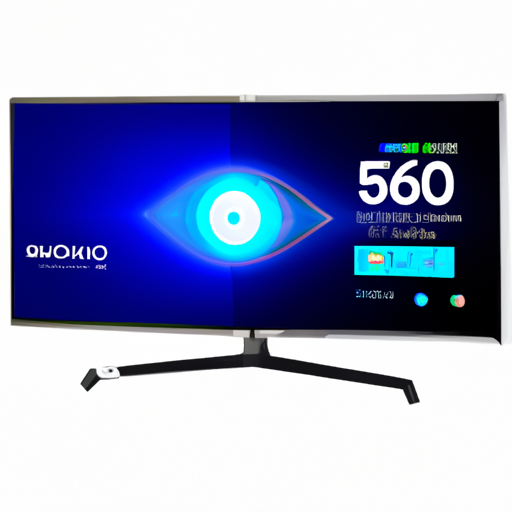The Ultimate Guide to 360 Degree LED Video Display Manufacture
Introduction to 360 Degree LED Video Displays
360 Degree LED Video Displays are revolutionizing the way we perceive visual content. With advancements in technology, these displays offer a panoramic viewing experience that captivates audiences, making them a popular choice in various sectors such as advertising, events, and public installations. This article provides an in-depth look into the manufacture of 360 degree LED video displays, the key elements involved, and the benefits of choosing this innovative technology.
What is a 360 Degree LED Video Display?
Definition and Scope
A 360 Degree LED Video Display is a type of display technology that allows for omnidirectional viewing. Instead of a flat screen, the display wraps around into a cylindrical or spherical structure, providing a seamless visual experience from all angles.
Applications and Use Cases
These displays are frequently used in:
- Advertising: Engaging storefront windows and billboard replacements.
- Events: Concerts, exhibitions, and trade shows.
- Public Installations: Museums, art galleries, and public squares.
The Technology Behind 360 Degree LED Video Displays
LED Panels
The heart of any LED video display is the LED panel. These panels are made up of thousands of tiny light-emitting diodes (LEDs). In a 360-degree configuration, these panels are curved or flexibly manipulated to form a continuous display.
Control Systems
To ensure smooth and synchronized operation, advanced control systems manage the display. These systems are responsible for:
- Synchronization: Ensuring all angles display the same image.
- Content Management: Uploading and managing video content.
- Diagnostics: Monitoring the health of each LED and the overall system.
Manufacturing Process of 360 Degree LED Video Displays
Designing the Display
- Needs Analysis: Understand the client's requirement regarding size, resolution, and application.
- Conceptualization: Develop a design that meets the technical and aesthetic requirements.
- Simulation: Use software tools to simulate the final outcome.
Component Sourcing and Assembly
- LED Chips: Sourcing high-quality LEDs is crucial. The chips are the smallest component and dictate overall display quality.
- PCB Manufacturing: Custom Printed Circuit Boards (PCBs) are manufactured to fit the 360-degree configuration.
- Panel Assembly: LEDs are mounted on the PCBs and encased in weather-proof, durable materials.
Testing and Quality Control
- Initial Testing: Each panel undergoes rigorous testing for color accuracy, brightness, and consistency.
- System Integration: Panels are then tested as a complete system to ensure seamless operation.
- Final Quality Checks: Comprehensive diagnostics are run to ensure no malfunctions.
Key Features of High-Quality 360 Degree LED Video Displays
Resolution and Pixel Density
Higher resolution and pixel density provide clearer and more detailed images. For optimal viewing, the resolution should correspond to the display's size and intended viewing distance.
Brightness and Contrast
High brightness ensures visibility even in well-lit environments, while superior contrast provides depth and clarity to the images.
Viewing Angles
The display should offer wide viewing angles without color distortion to maintain uniform viewing from all directions.
Durability and Weather Resistance
For outdoor displays, robustness and weather resistance are crucial. These displays often come with an IP rating to indicate their protection level against environmental elements.
Benefits of 360 Degree LED Video Displays
- Enhanced Visibility: With visibility from all angles, these displays attract more attention and engagement.
- Versatility: Suitable for varied applications, from commercial advertising to artistic installations.
- Innovative Advertising: Offers unique advertising opportunities, grabbing viewer attention more effectively than traditional 2D displays.
Challenges in Manufacturing and Maintenance
Technical Challenges
- Heat Dissipation: Ensuring effective cooling mechanisms to prevent overheating.
- Synchronization: Maintaining sync across all panels can be complex and requires sophisticated control systems.
Maintenance Challenges
- Accessibility: Accessing internal components for repair can be challenging due to the wrap-around structure.
- Durability: Ensuring long-term durability and minimal downtime is essential.
Case Studies of Successful 360 Degree LED Video Display Installations
Times Square, New York
Times Square features several 360 degree LED video displays, captivating millions of visitors annually. These installations have significantly boosted advertising efficacy due to their remarkable visibility and engaging content delivery.
EXPO 2020, Dubai
At Expo 2020, a massive 360 Degree LED Video Display was unveiled, showcasing Dubai's innovation and futuristic outlook. This display was a central attraction, displaying dynamic content that highlighted the event's themes.
Future Trends in 360 Degree LED Video Display Technology
Integration with AI
AI-driven content management systems can personalize and optimize displayed content in real-time, enhancing viewer engagement.
Advanced Materials
Research into lightweight and flexible materials will further improve display robustness and ease of installation.
Interactivity
Interactive 360 degree displays are becoming more popular, allowing viewers to engage with the content in immersive new ways.
Conclusion
The manufacturing of 360 degree LED video displays represents the pinnacle of modern display technology. These displays offer unmatched visibility, engagement, and aesthetic appeal. As technology continues to evolve, we can expect even more innovative applications and improvements in this exciting field.
By understanding the intricacies of their design, manufacture, and application, one can appreciate the remarkable capabilities these displays bring to various industries. For businesses looking to stay ahead of the curve, investing in a 360 degree LED video display can provide a significant competitive edge.

